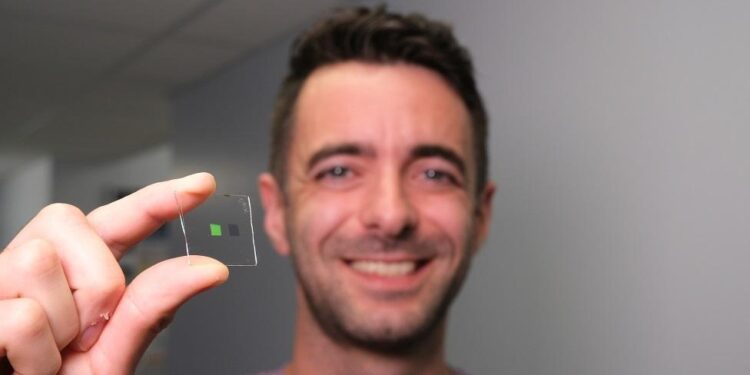In a groundbreaking development that blurs the line between biology and technology, researchers have unveiled the world’s first artificial tongue capable of not only tasting but also learning like a real human organ. This innovative device mimics the complex sensory functions of the human tongue, opening new frontiers in food quality control, medical diagnostics, and robotic sensing. The advancement, detailed in a recent report by Live Science, marks a significant step forward in the quest to replicate human sensory experiences with artificial intelligence and sensor technology.
Worlds First Artificial Tongue Mimics Human Taste Buds with Advanced Sensory Technology
Researchers have unveiled an unprecedented breakthrough in sensory technology: an artificial tongue capable of replicating the complex taste functions of human taste buds. This innovative device integrates advanced nano-sensors with adaptive algorithms, allowing it not only to detect a wide range of flavor profiles but also to learn and improve its responses over time-much like the biological taste system. Unlike previous models, which could only identify basic taste categories, this artificial tongue can distinguish subtle variations in taste intensity and combinations, making it a game-changer for food quality control, medical diagnostics, and even environmental monitoring.
Key Features of the Artificial Tongue:
- Multi-sensor array mimicking different taste receptors
- Machine learning capabilities for adaptive taste recognition
- Real-time analysis with high sensitivity to chemical compounds
- Compact and durable design suitable for versatile applications
| Flavor Category | Detection Accuracy | Response Time |
|---|---|---|
| Sweet | 98% | 0.3 sec |
| Sour | 95% | 0.4 sec |
| Salty | 97% | 0.3 sec |
| Bitter | 94% | 0.5 sec |
| Umami | 96% | 0.4 sec |
How the Artificial Tongue Learns and Adapts to Different Flavors in Real Time
At the heart of this cutting-edge technology lies a network of nanoscale sensors coated with chemical receptors that mimic human taste buds. These sensors generate unique electrical signals in response to various flavor compounds, which are then processed by an integrated machine learning algorithm. Unlike traditional taste sensors that rely on fixed calibration, this artificial tongue evolves its taste profile dynamically, enabling it to discern subtle differences between complex flavor mixtures – from bitter to sweet, sour to umami. As it samples foods or beverages in real time, the system continuously updates its internal model, drawing parallels with how human taste perception adapts based on prior exposures and context.
The device’s adaptive learning is further enhanced through a feedback loop involving a growing database of flavor signatures. This evolving repository allows the artificial tongue to improve accuracy and even predict new taste combinations. Key features enabling this real-time adaptation include:
- Self-calibrating sensors that fine-tune sensitivity based on environmental factors
- Neural network algorithms trained on thousands of flavor profiles to recognize patterns
- Continuous learning mode that integrates new chemical data on the fly
| Flavor Category | Sensor Response | Adaptation Speed |
|---|---|---|
| Sweet | High electrical conductivity | Milliseconds |
| Bitter | Moderate signal attenuation | Seconds |
| Umami | Distinct frequency patterns | Milliseconds |
| Sour | Rapid voltage spikes | Immediate |
Potential Applications and Future Developments for Artificial Taste Sensors in Food and Medicine
The revolutionary artificial tongue promises to transform industries by delivering precise and nuanced flavor detection previously unattainable with traditional sensors. In food technology, it could enable manufacturers to craft new recipes with fine-tuned taste profiles, reduce waste by identifying spoilage earlier, and even customize meals tailored to individual palates. Furthermore, the development of such adaptive sensors paves the way for automated quality control processes that learn and evolve, ensuring consistent product excellence without human intervention.
In the realm of medicine, this breakthrough opens exciting avenues for non-invasive health diagnostics and drug development. Artificial tongues could monitor subtle chemical changes in bodily fluids, offering early detection of diseases or metabolic conditions. Future enhancements may even allow wearable devices to track medication efficacy based on taste receptor response, enabling personalized treatment plans. Key potential benefits include:
- Real-time flavor adaptation in food production lines
- Enhanced sensory evaluation for pharmaceuticals
- Early detection of infections through taste biomarkers
- Integration with AI for continuous learning and accuracy improvement
| Field | Application | Future Benefit |
|---|---|---|
| Food Industry | Flavor profiling | Personalized nutrition |
| Medicine | Non-invasive diagnostics | Early disease detection |
| Pharmaceuticals | Drug taste masking | Improved patient compliance |
| Wearables | Health monitoring | Real-time treatment adjustments |
Insights and Conclusions
As research into artificial sensory technology advances, the development of the world’s first artificial tongue marks a significant milestone in replicating human taste perception. By not only detecting flavors but also learning and adapting like a biological tongue, this innovation opens new avenues for applications ranging from food quality control to medical diagnostics. While challenges remain in fully mimicking the complex nuances of human taste, this breakthrough brings scientists one step closer to bridging the gap between human senses and machine intelligence. Further studies and refinements will determine how soon this technology can move from the lab to everyday use, potentially transforming how we understand and interact with flavors in the future.































